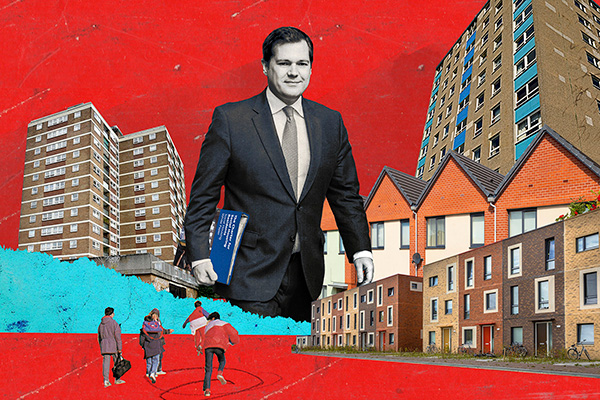You are viewing 1 of your 1 free articles
The story explained: the Social Housing Regulation Bill
The long wait for legislation on consumer regulation in social housing is nearly up. Peter Apps explains what it all means
What is this planned legislation all about?
The government has long-standing plans to increase what is known as consumer regulation in the social housing sector. This means the powers of the regulator to oversee the services provided to residents and intervene if they are not good enough.
The existing Regulator of Social Housing has been working up plans to implement this for some time, but bringing it into force requires legislation. That is what the Social Housing Regulation Bill is for.
And what do we know about the planned consumer regulation regime?
Quite a lot, actually. When active, the regulator is likely to carry out routine inspections of social landlords with more than 1,000 homes, and then develop new consumer standards and tenant satisfaction measures to track their performance.
The legislation will also do away with the existing ‘serious detriment test’, which currently sets a high legal bar on its power to intervene in any alleged service failures. In November, the regulator published a policy paper explaining its planned approach, which set out 10 outcomes it hoped to achieve from the new regime. It is currently consulting on its approach, pending the legislation coming into force.
Haven’t we been waiting for this for a while?
Yes. More than four years. This dates right back to promises for a ‘Social Housing Green Paper’ in September 2017, which then housing secretary Sajid Javid would mark a “fundamental rethink of social housing in this country”.
In the end, that wasn’t published until summer 2018, a subsequent white paper did not come out until autumn 2020 and we’re only now seeing the legislation.
What’s taken so long?
In a nutshell: politics. Initial delays resulted from the revolving door of housing ministers and secretaries of state, all of whom wanted to put their own stamp on proposals.
Then Brexit and the pandemic pushed it down the priority list, with Boris Johnson’s regime at first prioritising planning reform (which now appears to have been shelved) over social housing.
This delay has been desperately frustrating for many Grenfell Tower bereaved and survivors, who view social housing reform as a key step in preventing a repeat of their experience.
So would this legislation be mission accomplished for the white paper proposals?
Not at all. This only deals with consumer regulation, and we have also been promised changes in various other levels, such as resident empowerment, tackling stigma and providing a national voice for residents of social housing.
Whether there is the political will to push these forward after so long remains to be seen.
Consumer regulation isn’t a new idea, is it? Didn’t a former housing minister “toast” the end of such an approach some years ago?
You have a good memory. A fledgling regulator, the Tenant Services Authority (TSA), was set up by Gordon Brown’s government following various reports into the lack of representation for social housing tenants. But it was axed by the coalition government as part of its austerity regime, with then housing minister Grant Shapps memorably telling an Inside Housing reporter that “the TSA is toast”.
It was then that the ‘serious detriment’ test was imposed by law, effectively shutting the regulator out of most consumer matters. You could see this whole process as essentially a very, very slow U-turn.
Does this have anything to do with the recent stories from ITV about disrepair?
Not directly. Plans were well under way before those stories began to appear. But it is certainly possible that they have helped to force it back up the agenda, and may influence the exact shape and scope of the regulator’s new powers.
Will the new regulator deal with tenant complaints?
No. That will remain the job of the Housing Ombudsman. The new regulator will be taking a more holistic look at how an organisation is performing in terms of its services to residents.
That said, the two organisations already work together relatively closely and it is likely the ombudsman would alert the regulator if it thought it had uncovered more systemic issues in its work.
How long until this is actually in force?
Assuming no surprises, the bill should be uncontroversial and attract cross-party support. But getting through both Houses of Parliament and on to the statute books is never quick.
The good news is that the regulator is already building up its capacity and should be ready to hit the ground running once the legislation is in force. Spring next year may be a good bet.
That said, the primary delay so far has been politics, and you can never count that out. Who knows what a new Conservative leader might think of all this.
Sign up for our legal and regulation newsletter
Already have an account? Click here to manage your newsletters












